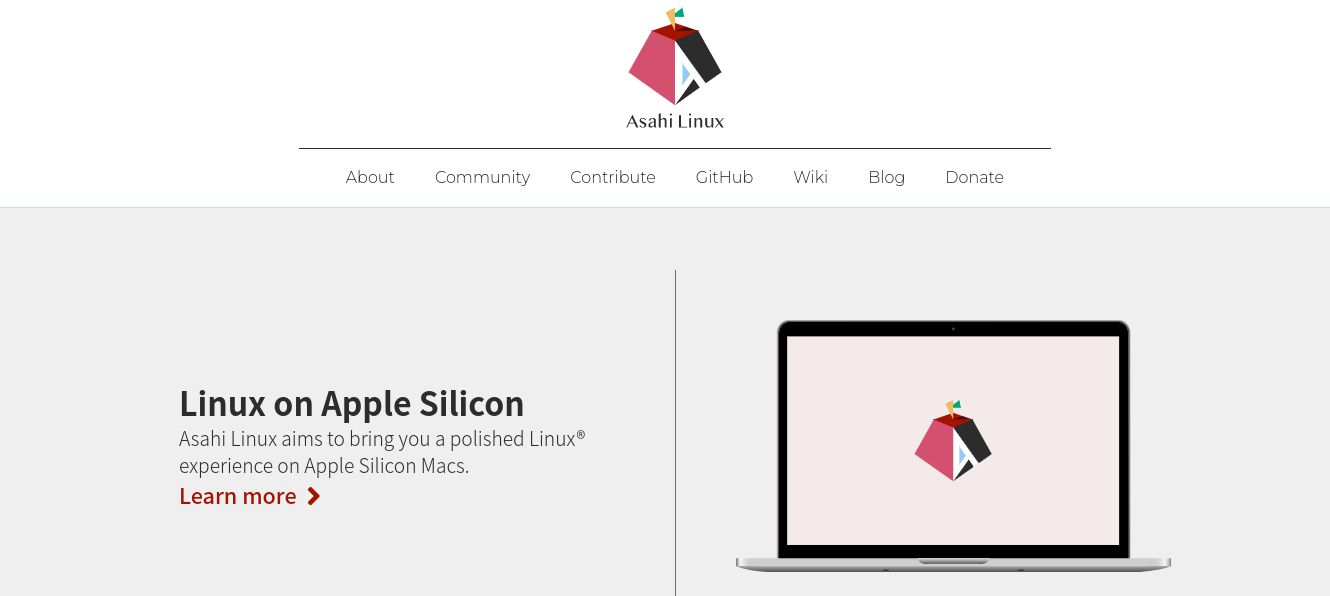The distro has added USB 3.0 support, but speaker support will have to wait. Livestreaming of its coding is a surprise hit on YouTube.
The Asahi Linux project, a distribution aiming to make a Linux desktop available for Apple Silicon-based Macs, has issued a November 2022 “progress report.”
Asahi Linux Boosts Hardware Support
Asahi project lead Hector Martin, known as “marcan,” announced the distribution’s progress in an official blog post.
“This month’s update is packed with new hardware support, new features, and fixes for longstanding pain points, as well as a new bleeding-edge kernel branch with long-awaited support for suspend and the display controller!” Martin said.
One major change to Asahi Linux is that it now supports USB 3.0 devices. The main challenge has been writing the PHY driver that’s necessary to communicate with the Apple Silicon CPU. This requires some very careful timing on Asahi developers’ part. Asahi is only available for download as an Alpha release at the moment.
Still No Speaker Support in Asahi Linux Yet
While there’s improved USB support, one thing that’s still on the table is speaker support. The main reason is that it’s possible to blow out laptop speakers.
Martin himself seemed willing to risk the speakers in his own machine:
For months now we’ve had working speaker drivers, but we haven’t enabled them for good reason: because we had the very strong suspicion that you could destroy your speakers without more complex volume limits and safety systems. As it turns out… those suspicions were correct! I decided to take one for the team and run some tests on my MacBook Air M2, and even with some sensible volume limits I quickly managed to blow up my tweeters. Oops! Good thing we haven’t enabled the speakers yet!
That must have been an interesting call to AppleCare.
Asahi Linux users might have to wait for speaker support for at least a while longer. Martin says that the team will implement safety features to make sure that speakers are driven with proper voltages, similar to how MacOS and Android handle their speaker outputs.
Asahi Linux Proves Linux Finds a Way Onto Every Machine
The progress of Asahi Linux shows how Linux seems to expand to new hardware quickly. Linus Torvalds famously failed to imagine that his little kernel would ever progress beyond 386 machines, but almost every processor architecture now has a port available.
The effort will likely be aided by Apple Silicon’s basis in the ARM architecture, of which there is already a Linux port available. There are also several ARM-based machines with Linux preinstalled on the market. When Asashi Linux is more complete, it will be a viable alternative to macOS. Linux developers will likely relish the chance to port Linux to yet more hardware.
With Asahi Linux, users might see this development in real time, as VTuber and Asahi developer Asahi Lina has amassed a cult following on YouTube with an unlikely subject for livestreaming: Linux graphics stack development.
Asaha Lina currently boasts 11,000 subscribers to her YouTube channel.
Linux on the Mac Rolls On
Linux is available on many modern computing platforms, including the Mac. Users of Apple Silicon-based Macs who want something more stable in the meantime can set up a virtual machine with a Linux distro using Parallels or UTM while still running macOS.






